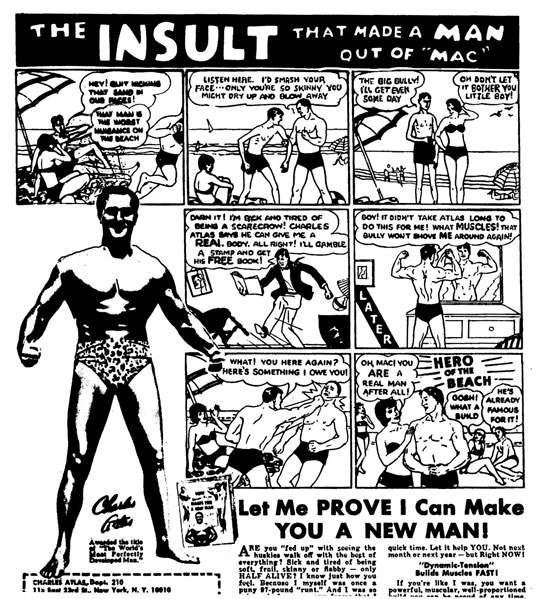Lesson 3.3A: How Are You Expected to Act?
Authors are often prompted to write a novel because of concerns or issues they see in the world around them. A novel can be a way to present a social issue in a context that helps readers to see it from a different perspective. In this lesson, you will have the opportunity to explore how one of the main issues presented in your novel is evident in the world around you.
 The Making of a Man The Making of a Man
You are now going to begin to explore some of the issues raised in the novel in the context of society in general. The concept you are going to explore in some depth is gender stereotyping, or the social expectations of how boys and girls may be expected to behave.
Take a few minutes and reflect on this topic before you read on. Have you heard of the phrase gender stereotyping before? Can you think of examples where you have witnessed this in your own life?
Expectations of behaviour may come from school, the media, or society. In high school, boys are under a lot of pressure to prove themselves, and, as Ryan experiences, to figure out who they really are. Girls are under similar pressures, and there are a lot of media messages and influences guiding both boys and girls to behave or believe in certain ways. Let's take a look at two apparently humorous, but also serious messages from a couple of ads that have appeared in comic magazines aimed at boys in the not so distant past. The first is from 1972 (over 35 years ago!), and the second is from 1992 (over 15 years ago). Notice that the message is very much the same even though the publications are many years apart. What do these ads teach boys to believe?
Before viewing these ads, take a few minutes to brush up on your viewing skills. Although visual texts are different from other texts, each presents information in a way that may be more efficient and understandable than words alone.
Tips for Effective Viewing:
- Identify the visual's purpose - to instruct, persuade, and create interest.
- Look to the title for a clue as to what the visual is communicating.
- Read any written text - captions, titles, legends, or notes.
- Analyse any numbers, shapes, images, or procedures the visual depicts.
- Identify the judgment, conclusion, or interpretation that is being emphasized.


| Topic |
Summary of important details or explanations |
| Hastings Park |
Racetrack with barns used to house the Japanese before they were moved to other camps across the province. |

Journal Entry 3.3A: Media Messages
Respond to the following questions in your Journal:
- What messages do the two ads give boys about how they should behave?
- These ads are over 15 and 35 years old. Do you think the message for boys is different now, or the same? Explain.
- Does Ryan or Josh seem to follow the code of behaviour taught by the ads? Explain.
|
 Sex, Violence, and Advertising Sex, Violence, and Advertising
You are now doing to read an article on sex, violence, and advertising. You will need to refer back to this article in a composition you will write in the next lesson. As you read, you may want to take notes. The process of note taking involves writing down important information from verbal and nonverbal information. The purpose of note taking is to help your remember what information is important and to create a summary of information to refer back to at a later time, for instance, when you need information to write a composition.
Here's one strategy you can use to take notes.
- Divide your page into two parts: the left column is one-third of the page and the right column is two-thirds of the page.
- As you read, write down key ideas, terms, topics in the left column.
- Write down a summary of important details or explanations in the right column.
- When you go back to your notes for reference, you can quickly locate key information by your topic list in the left column.
- Be sure to use your own words as you note take so that you know your brain has processed the information!
| Topic |
Summary of important details or explanations |
| Benetton |
Uses equality as an advertising technique |
Caution: the following article discusses graphic images of men and women in positions that suggest violence. The content is from public advertising, household magazines, and television. They are not rated, but available for general viewing. However, the content may be shocking.
 The following newspaper article appeared in The Daily News in 1991- - maybe before you were born. It seems that sex & violence were just as prevalent in advertising then, as they are now. The following newspaper article appeared in The Daily News in 1991- - maybe before you were born. It seems that sex & violence were just as prevalent in advertising then, as they are now.
|

Journal Entry 3.3B: Are You Surprised by the Messages?
Please respond to the following questions in your Journal:
- Are you surprised by the media messages that Roberts describes in the article above?
- Should there be standards as to what the media can portray in advertising?
|
What is Your View?
- Before you complete this lesson, take a few minutes and reflect on the following questions:
- Do you believe that the media influences the way boys act around you? Explain.
- In your experience, is violence a part of the way boys deal with each other and with girls?

Go to Writing on the Run! and complete the tutorial and exercises on "Active and Passive Voice."
Summary
Completing this lesson has helped you to:
- identify examples of discrimination in the novel.
- explore incidences of racial or other discrimination in recent history.
- reflect on your own experiences with discrimination.
|

